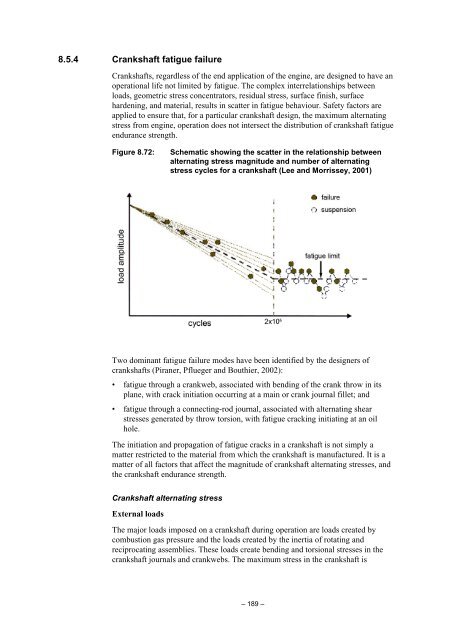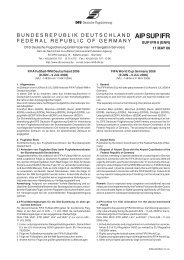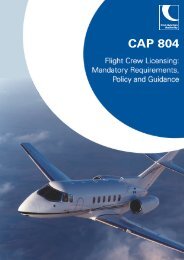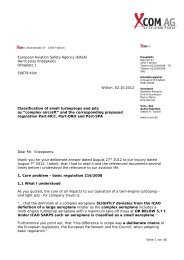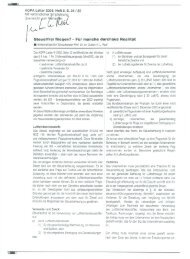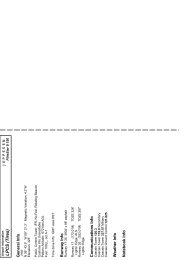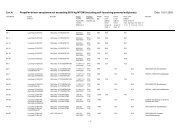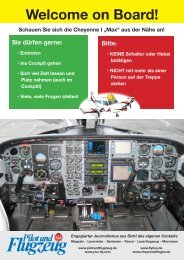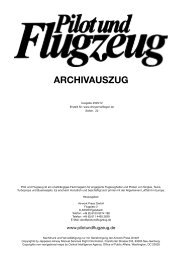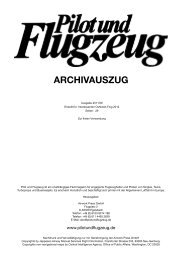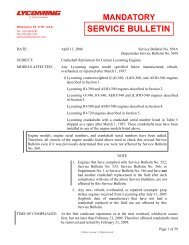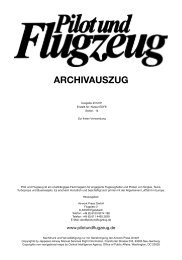Aircraft Reciprocating-Engine Failure - Pilot und Flugzeug
Aircraft Reciprocating-Engine Failure - Pilot und Flugzeug
Aircraft Reciprocating-Engine Failure - Pilot und Flugzeug
Create successful ePaper yourself
Turn your PDF publications into a flip-book with our unique Google optimized e-Paper software.
8.5.4 Crankshaft fatigue failure<br />
Crankshafts, regardless of the end application of the engine, are designed to have an<br />
operational life not limited by fatigue. The complex interrelationships between<br />
loads, geometric stress concentrators, residual stress, surface finish, surface<br />
hardening, and material, results in scatter in fatigue behaviour. Safety factors are<br />
applied to ensure that, for a particular crankshaft design, the maximum alternating<br />
stress from engine, operation does not intersect the distribution of crankshaft fatigue<br />
endurance strength.<br />
Figure 8.72:<br />
Schematic showing the scatter in the relationship between<br />
alternating stress magnitude and number of alternating<br />
stress cycles for a crankshaft (Lee and Morrissey, 2001)<br />
Two dominant fatigue failure modes have been identified by the designers of<br />
crankshafts (Piraner, Pflueger and Bouthier, 2002):<br />
• fatigue through a crankweb, associated with bending of the crank throw in its<br />
plane, with crack initiation occurring at a main or crank journal fillet; and<br />
• fatigue through a connecting-rod journal, associated with alternating shear<br />
stresses generated by throw torsion, with fatigue cracking initiating at an oil<br />
hole.<br />
The initiation and propagation of fatigue cracks in a crankshaft is not simply a<br />
matter restricted to the material from which the crankshaft is manufactured. It is a<br />
matter of all factors that affect the magnitude of crankshaft alternating stresses, and<br />
the crankshaft endurance strength.<br />
Crankshaft alternating stress<br />
External loads<br />
The major loads imposed on a crankshaft during operation are loads created by<br />
combustion gas pressure and the loads created by the inertia of rotating and<br />
reciprocating assemblies. These loads create bending and torsional stresses in the<br />
crankshaft journals and crankwebs. The maximum stress in the crankshaft is<br />
– 189 –


